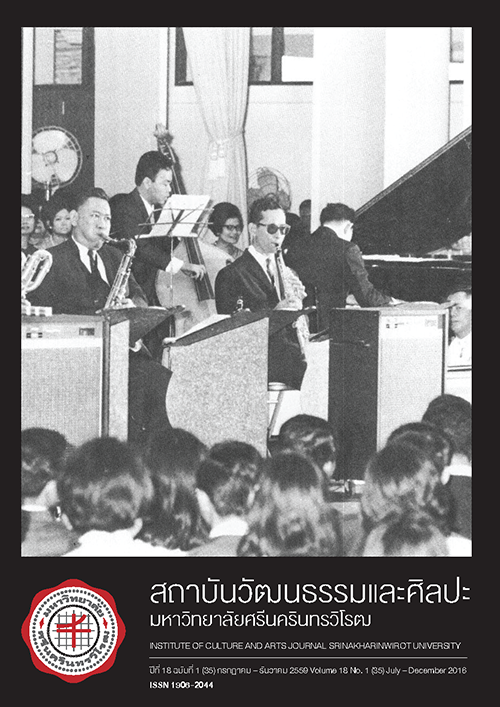การศึกษาวัฒนธรรมอาหารอาเซียนเพื่อประชาคมสังคมและวัฒนธรรมอาเซียน
บทคัดย่อ
This study, entitled Study of ASEAN Food Culture for ASEAN Socio - Cultural Community, aimed to investigate ASEAN food culture. The study began with reviewing relevant literature on cultural history, eating culture, raw materials, ingredients and recipes followed by developing 22 iconic national dishes which were then evaluated using 9-point hedonic scale sensory test and appropriateness of food culture (Likert rating scale) by 9 expert chefs. The statistical devices employed in data analysis were descriptive statistics: arithmetic mean and standard deviation. The results were as follows:
1. ASEAN food culture based on the initial study, it can be concluded that ASEAN food culture can be divided into following 5 main groups; 1) Cuisine culture has been primarily shaped by natural factors including geographical and climatic conditions, beliefs and religious factors, and cultural transfers 2) Rice-eating culture 3) Culture of seasonings and condiments 4) Culture of spices and herbs 5) Culture of food preparation, cooking and serving. Food culture in ASEAN region can be divided into 3 sub-groups including Mekong region, Malay Peninsula region, and the Philippines region.
2. The 9-point hedonic scale sensory test by 9 expert chefs from ASEAN countries, all of whom are members of the World Association of Chefs' Societies, showed that the overall average score was 8.64, with 8.62 for Mekong, 8.57 for Malay Peninsula and 8.59 for the Philippines, and the appropriateness of food culture showed that the overall average score was 8.56, with 8.55 for Mekong, 8.61 for Malay Peninsula and 8.63 for the Philippines.
Downloads
ดาวน์โหลด
รูปแบบการอ้างอิง
ฉบับ
ประเภทบทความ
สัญญาอนุญาต
บทความทุกบทความที่ได้รับการตีพิมพ์ถือเป็นลิขสิทธิ์ของวารสารสถาบันวัฒนธรรมและศิลปะ มหาวิทยาลัยศรีนครินทรวิโรฒ



